TYPHOID FEVER TYPHOID FEVER Typhoid fever is
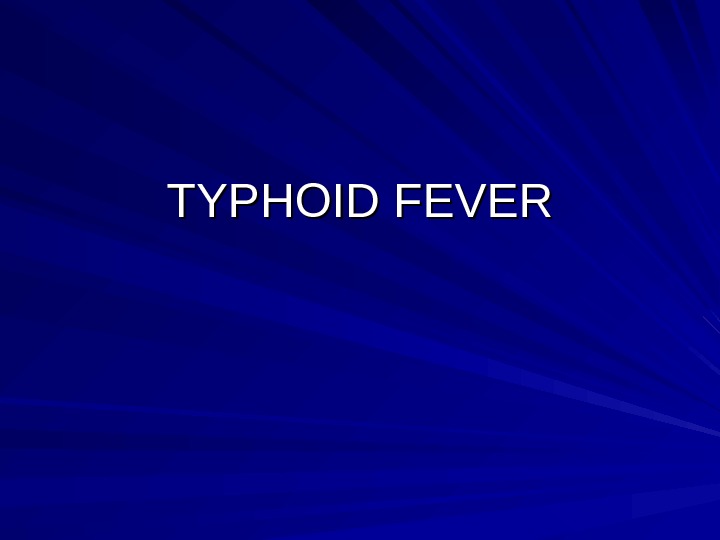
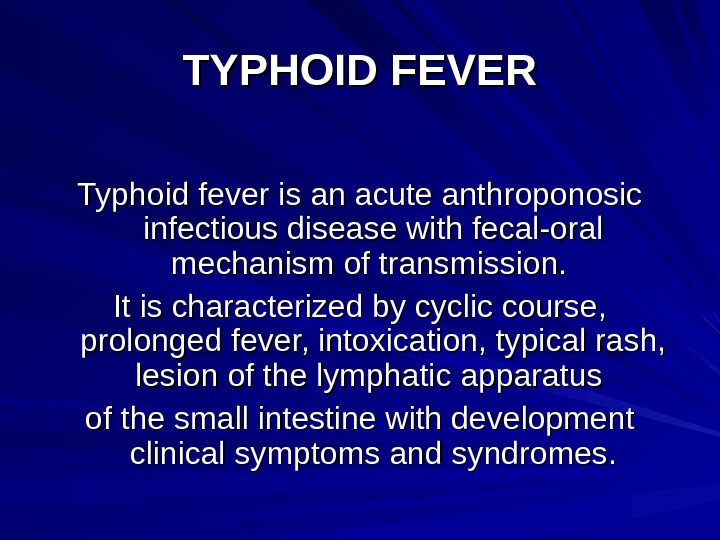
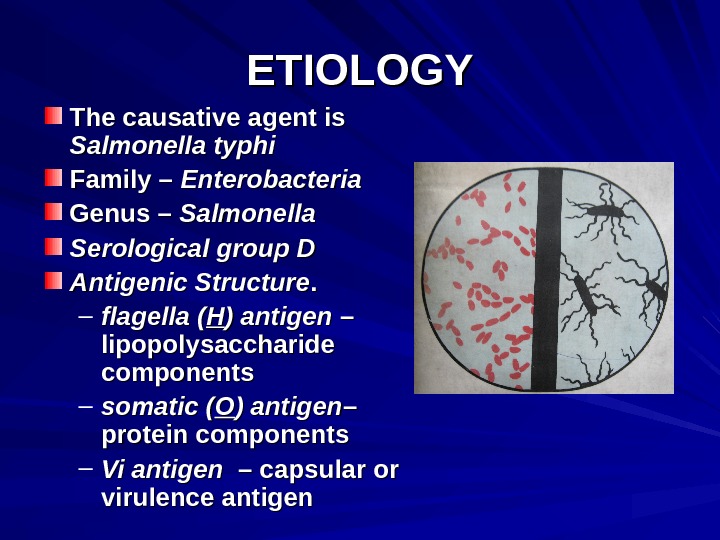
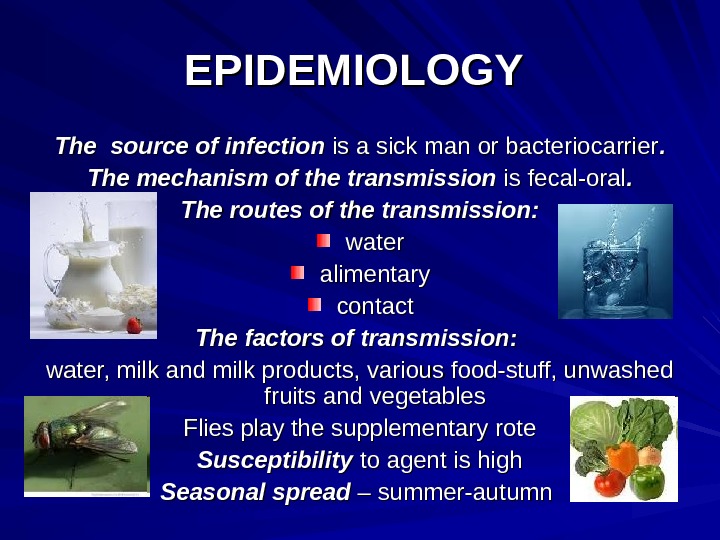

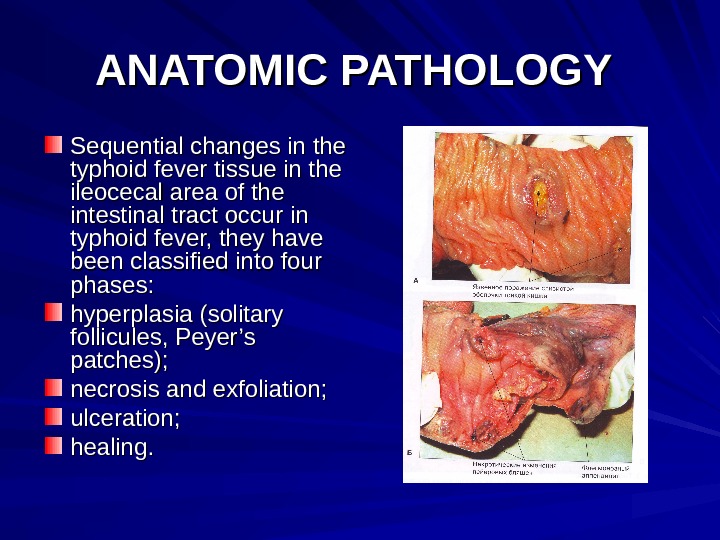
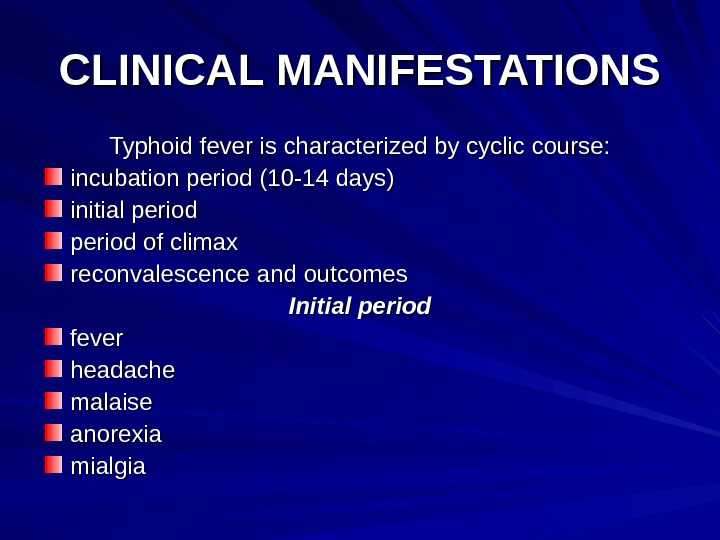
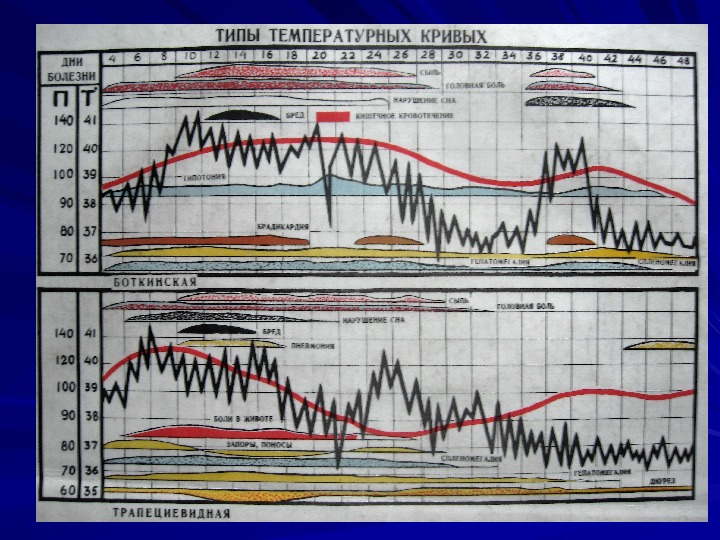

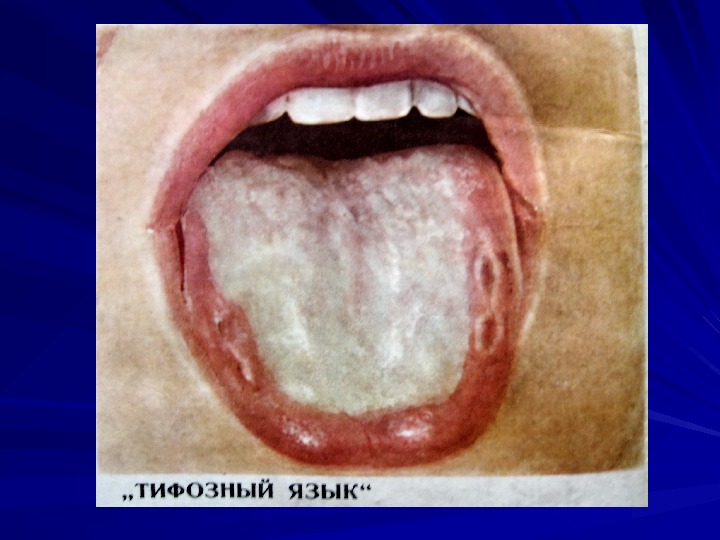
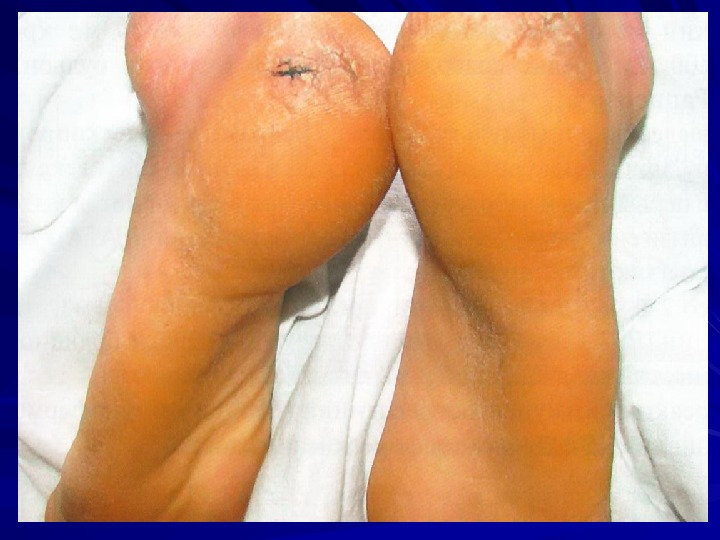
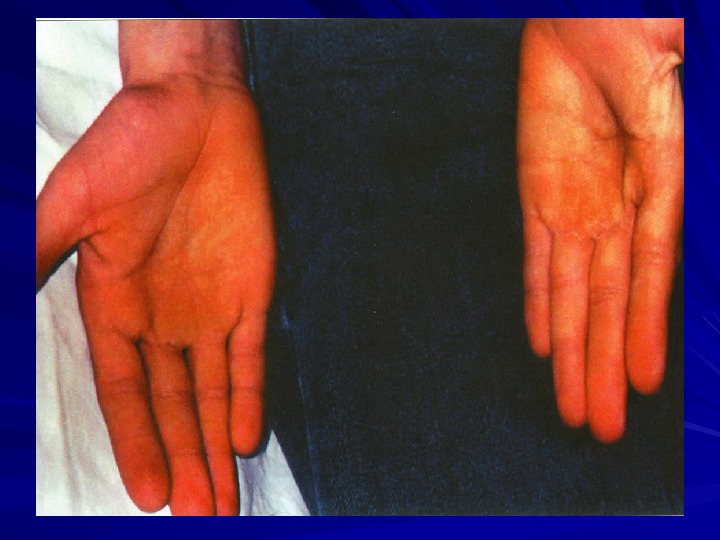
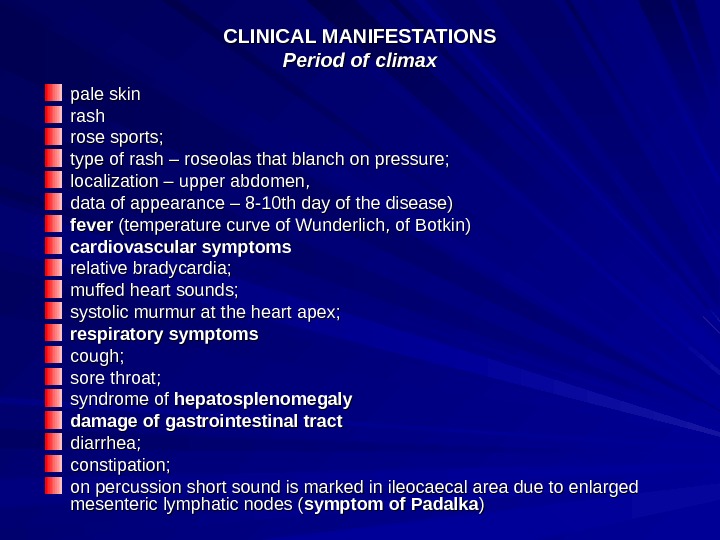
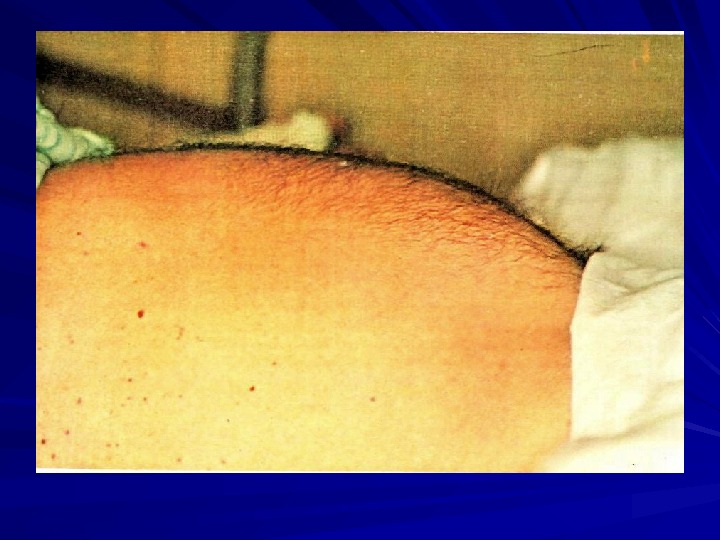
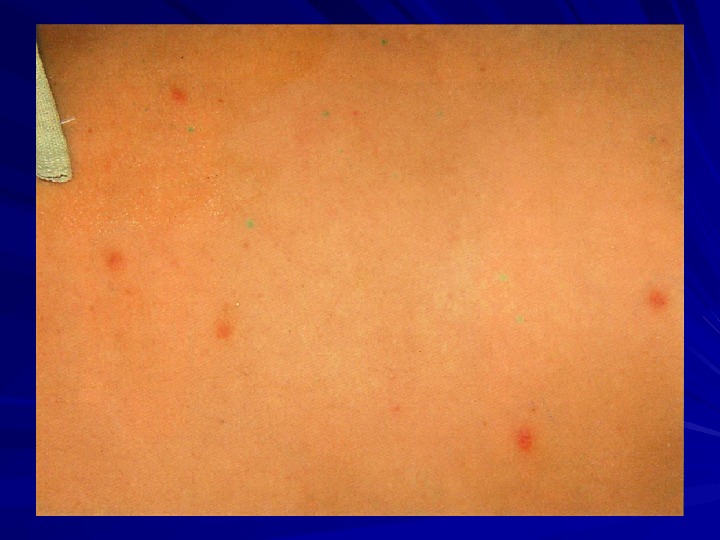
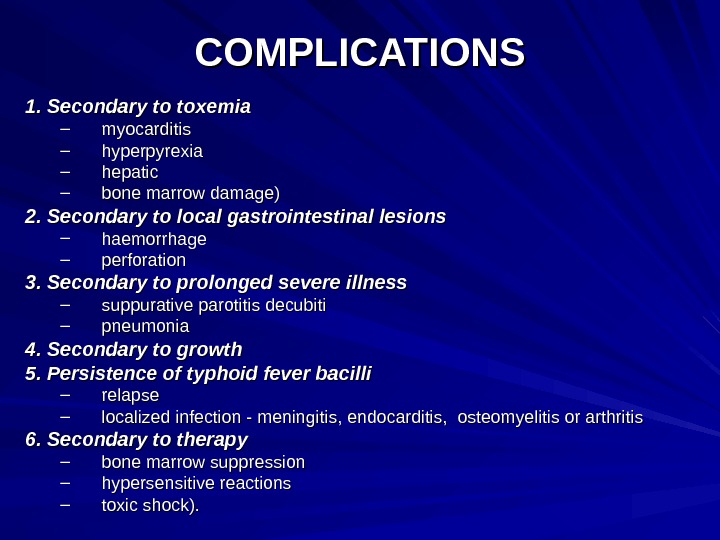
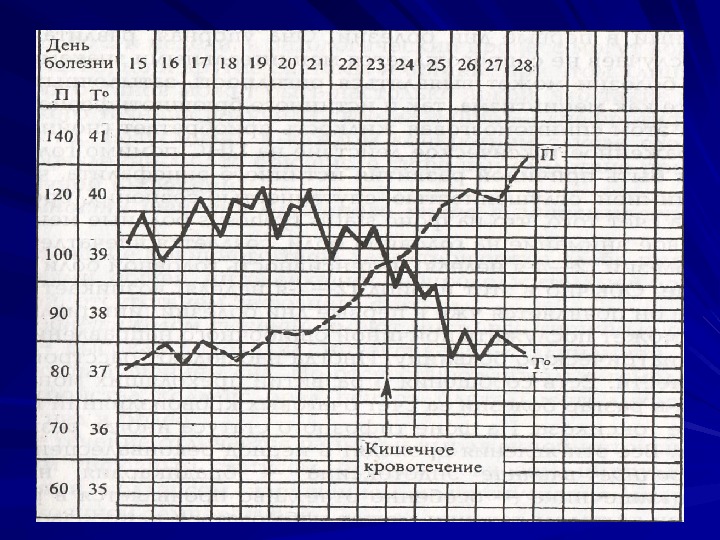
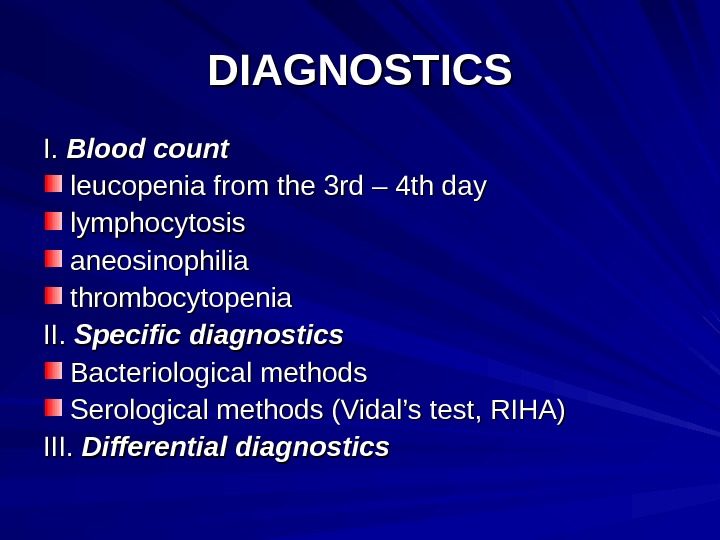
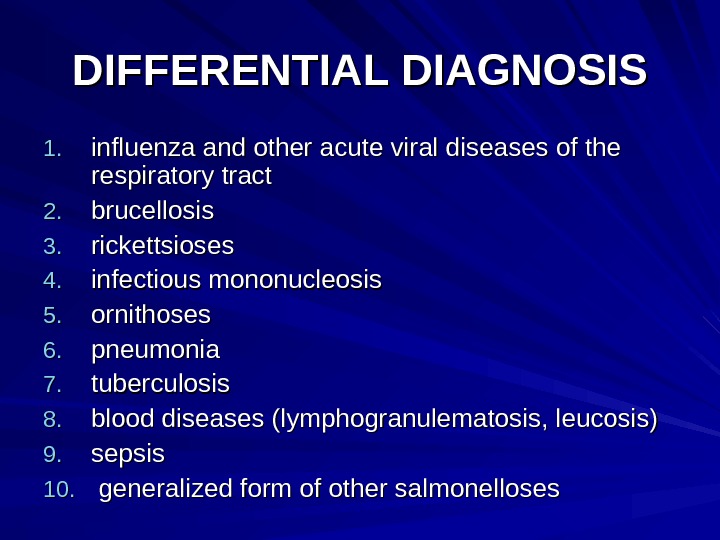
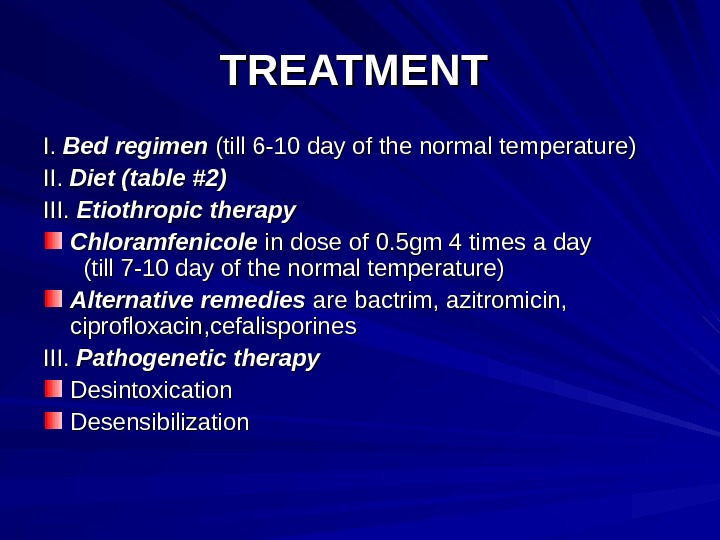
- Размер: 21.6 Mегабайта
- Количество слайдов: 20
Описание презентации TYPHOID FEVER TYPHOID FEVER Typhoid fever is по слайдам
 TYPHOID FEVER
TYPHOID FEVER
 TYPHOID FEVER Typhoid fever is an acute anthroponosic infectious disease with fecal-oral mechanism of transmission. It is characterized by cyclic course, prolonged fever, intoxication, typical rash, lesion of the lymphatic apparatus of the small intestine with development clinical symptoms and syndromes.
TYPHOID FEVER Typhoid fever is an acute anthroponosic infectious disease with fecal-oral mechanism of transmission. It is characterized by cyclic course, prolonged fever, intoxication, typical rash, lesion of the lymphatic apparatus of the small intestine with development clinical symptoms and syndromes.
 ETIOLOGY The causative agent is Salmonella typhi Family – Enterobacteria Genus – Salmonella Serological group D Antigenic Structure. . – flagella ( HH ) antigen – – lipopolysaccharide components – somatic ( OO ) antigen – – protein components – Vi antigen – capsular or virulence antigen
ETIOLOGY The causative agent is Salmonella typhi Family – Enterobacteria Genus – Salmonella Serological group D Antigenic Structure. . – flagella ( HH ) antigen – – lipopolysaccharide components – somatic ( OO ) antigen – – protein components – Vi antigen – capsular or virulence antigen
 EPIDEMIOLOGY The source of infection is a sick man or bacteriocarrier. . The mechanism of the transmission is fecal-oral. . The routes of the transmission: water alimentary contact The factors of transmission: water, milk and milk products, various food-stuff, unwashed fruits and vegetables Flies play the supplementary rote Susceptibility to agent is high Seasonal spread – summer-autumn
EPIDEMIOLOGY The source of infection is a sick man or bacteriocarrier. . The mechanism of the transmission is fecal-oral. . The routes of the transmission: water alimentary contact The factors of transmission: water, milk and milk products, various food-stuff, unwashed fruits and vegetables Flies play the supplementary rote Susceptibility to agent is high Seasonal spread – summer-autumn
 PATHOGENESIS The following phases are distinguished in the pathogenesis of typhoid fever: Penetration of the causative agent into the organism. Development of lymphadenitis and lymphangitis. Bacteremia Intoxication. Parenchymatous diffusion. Discharge of the agent from the organism (excretory phase). Allergic reaction mainly of the lymphoid tissue of the small intestine Formation of immunity.
PATHOGENESIS The following phases are distinguished in the pathogenesis of typhoid fever: Penetration of the causative agent into the organism. Development of lymphadenitis and lymphangitis. Bacteremia Intoxication. Parenchymatous diffusion. Discharge of the agent from the organism (excretory phase). Allergic reaction mainly of the lymphoid tissue of the small intestine Formation of immunity.
 ANATOMIC PATHOLOGY Sequential changes in the typhoid fever tissue in the ileocecal area of the intestinal tract occur in typhoid fever, they have been classified into four phases: hyperplasia (solitary follicules, Peyer’s patches); necrosis and exfoliation; ulceration; healing.
ANATOMIC PATHOLOGY Sequential changes in the typhoid fever tissue in the ileocecal area of the intestinal tract occur in typhoid fever, they have been classified into four phases: hyperplasia (solitary follicules, Peyer’s patches); necrosis and exfoliation; ulceration; healing.
 CLINICAL MANIFESTATIONS Typhoid fever is characterized by cyclic course: incubation period (10 -14 days) initial period of climax reconvalescence and outcomes Initial period fever headache malaise anorexia mialgia
CLINICAL MANIFESTATIONS Typhoid fever is characterized by cyclic course: incubation period (10 -14 days) initial period of climax reconvalescence and outcomes Initial period fever headache malaise anorexia mialgia





 CLINICAL MANIFESTATIONS Period of climax pale skin rash rose sports; type of rash – roseolas that blanch on pressure; localization – upper abdomen, data of appearance – 8 -10 th day of the disease) fever (temperature curve of Wunderlich, of Botkin) cardiovascular symptoms relative bradycardia; muffed heart sounds; systolic murmur at the heart apex; respiratory symptoms cough; sore throat; syndrome of hepatosplenomegaly damage of gastrointestinal tract diarrhea; constipation; on percussion short sound is marked in ileocaecal area due to enlarged mesenteric lymphatic nodes ( symptom of Padalka ))
CLINICAL MANIFESTATIONS Period of climax pale skin rash rose sports; type of rash – roseolas that blanch on pressure; localization – upper abdomen, data of appearance – 8 -10 th day of the disease) fever (temperature curve of Wunderlich, of Botkin) cardiovascular symptoms relative bradycardia; muffed heart sounds; systolic murmur at the heart apex; respiratory symptoms cough; sore throat; syndrome of hepatosplenomegaly damage of gastrointestinal tract diarrhea; constipation; on percussion short sound is marked in ileocaecal area due to enlarged mesenteric lymphatic nodes ( symptom of Padalka ))


 COMPLICATIONS 1. Secondary to toxemia – myocarditis – hyperpyrexia – hepatic – bone marrow damage) 2. Secondary to local gastrointestinal lesions – haemorrhage – perforation 3. Secondary to prolonged severe illness – suppurative parotitis decubiti – pneumonia 4. Secondary to growth 5. Persistence of typhoid fever bacilli – relapse – localized infection — meningitis, endocarditis, osteomyelitis or arthritis 6. Secondary to therapy – bone marrow suppression – hypersensitive reactions – toxic shock).
COMPLICATIONS 1. Secondary to toxemia – myocarditis – hyperpyrexia – hepatic – bone marrow damage) 2. Secondary to local gastrointestinal lesions – haemorrhage – perforation 3. Secondary to prolonged severe illness – suppurative parotitis decubiti – pneumonia 4. Secondary to growth 5. Persistence of typhoid fever bacilli – relapse – localized infection — meningitis, endocarditis, osteomyelitis or arthritis 6. Secondary to therapy – bone marrow suppression – hypersensitive reactions – toxic shock).

 DIAGNOSTICS ІІ. . Blood count leucopenia from the 3 rd – 4 th day lymphocytosis aneosinophilia thrombocytopenia ІІ. Specific diagnostics Bacteriological methods Serological methods (Vidal’s test, RIHA) ІІІІ II. . Differential diagnostics
DIAGNOSTICS ІІ. . Blood count leucopenia from the 3 rd – 4 th day lymphocytosis aneosinophilia thrombocytopenia ІІ. Specific diagnostics Bacteriological methods Serological methods (Vidal’s test, RIHA) ІІІІ II. . Differential diagnostics
 DIFFERENTIAL DIAGNOSIS 1. 1. influenza and other acute viral diseases of the respiratory tract 2. 2. brucellosis 3. 3. rickettsioses 4. 4. infectious mononucleosis 5. 5. ornithoses 6. 6. pneumonia 7. 7. tuberculosis 8. 8. blood diseases (lymphogranulematosis, leucosis) 9. 9. sepsis 10. generalized form of other salmonelloses
DIFFERENTIAL DIAGNOSIS 1. 1. influenza and other acute viral diseases of the respiratory tract 2. 2. brucellosis 3. 3. rickettsioses 4. 4. infectious mononucleosis 5. 5. ornithoses 6. 6. pneumonia 7. 7. tuberculosis 8. 8. blood diseases (lymphogranulematosis, leucosis) 9. 9. sepsis 10. generalized form of other salmonelloses
 TREATMENT ІІ. . Bed regimen (till 6 -10 day of the normal temperature) ІІІІ. . Diet (table #2) ІІІІ I. I. Etiothropic therapy Chloramfenicole in dose of 0. 5 gm 4 times a day (till 7 -10 day of the normal temperature) Alternative remedies are bactrim, azitromicin, ciprofloxacin, cefalisporines ІІІІ I. I. Pathogenetic therapy Desintoxication Desensibilization
TREATMENT ІІ. . Bed regimen (till 6 -10 day of the normal temperature) ІІІІ. . Diet (table #2) ІІІІ I. I. Etiothropic therapy Chloramfenicole in dose of 0. 5 gm 4 times a day (till 7 -10 day of the normal temperature) Alternative remedies are bactrim, azitromicin, ciprofloxacin, cefalisporines ІІІІ I. I. Pathogenetic therapy Desintoxication Desensibilization
